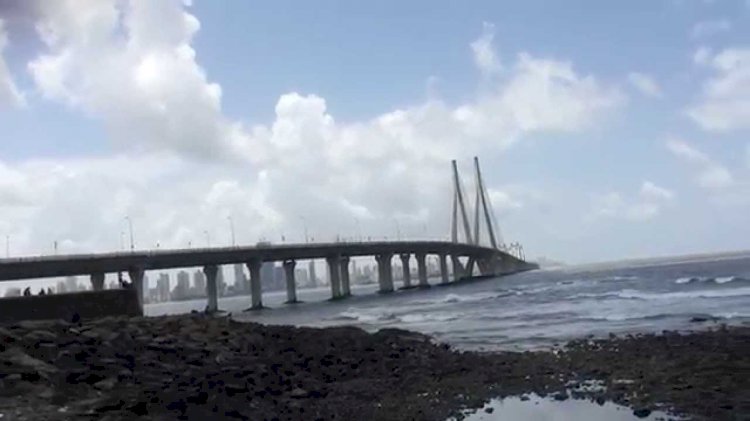Mumbai in danger zone
For Printing Download Epaper from files section from bottom of this page

There are many reports giving danger signals for metro city Mumbai that, in the next few years, the city will be ruined by frequent floods and an increase in sea water level. Not only this, there is a huge risk of frequent cyclones on the atmosphere of the Arabian sea due to global warming and sea water level rising. In the recent Tauktee cyclone, we have witnessed this fact as there was not very speedy winds but they had wrecked huge damage. As the habitat of Mumbai is extremely dense populated, the damage by small natural calamity occurs too large. The recent natural calamities like an extremely heavy downpour in Mumbai and the nearby Konkan area have been attributed to the climate crisis and this is a real danger to Metro city. As Mumbai is our financial capital, its loss ultimately transferred to national loss to the economy for which the entire country has to face the consequences. The climate crisis is certainly not the only driver of environmental risk in Mumbai. The phenomenon’s impact is aggravated by continuous and brazen development on its most ecologically sensitive zones — lakes, rivers, mudflats, wetlands, woods and coastline, and mangroves that create a sort of buffer zone against floods and storm surges. In the gigantic rain that occurred in Mumbai in two thousand and five, we came to know that, there is a river called Mithi in Mumbai. All the encroachments around the river have turned the river into a gutter. After July two thousand and five floods, we have not learnt a single lesson to tackle the climate crisis. Three weeks after Cyclone Tauktae battered Mumbai, the southwest monsoon arrived in the city on June 9, two days before the official onset. On the very first day of the season, the downpour (between 8.30 am and 5.30 pm) accounted for 43.6% of the city’s average rainfall for June (505mm). The city came to a standstill, with waterlogging and traffic snarls and train services partially hit.This is common now and Mumbai residents have accustomed to such situations. But, this is not the solution to the problem. While the India Meteorological Department has downgraded the “red alert” warning of “extremely heavy rain” to “orange alert” warning of “heavy to very heavy rain”, monsoon flooding has been a recurring challenge for India’s financial capital. Climate scientists attribute this pattern of intense rainfall within a short timeframe, resulting in flooding, to the climate crisis. According to a ministry of earth sciences report, the Mumbai region is highly vulnerable to the climate crisis due to sea-level rise, storm surge, and extreme precipitation. No government has done any efforts to tackle the issues. The increase in hard surfaces and loss of tree cover has prevented rainfall from seeping into the groundwater. Poor sewage and drainage systems also exacerbate the health risks of flooding. The poor are usually the worst-hit since they often live in dense settlements that lack essential services and infrastructure that could reduce risk. But that’s not all; climate-induced heavy rainfall, floods, cyclones, water shortage and rising temperature are also affecting business and will dent plans of eradicating poverty and achieving economic development. Mumbai offers a warning every year. It is high time to act on it. The administration should prevent new slum settlements but political parties will never allow it to be stopped as it is their vote bank. Illegal structures being erected with the unholy nexus of political leaders, corporators, and builders. Successive governments have not shown any political will to end this. So, Mumbai will be in a danger zone and one day it will face an apocalypse.

 Active Times
Active Times 
















